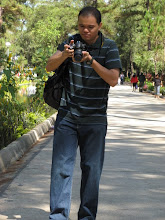Article: The Liturgy Source of Life, Prayer and Catechesis (CCC 1071-1075)
By Don Mauro Gagliardi
ROME, JAN. 25, 2012 (Zenit.org).- Numbers 1071-1075 of the Catechism of the Catholic Church (CCC) treat sacred liturgy as source of life, as well as its relationship with prayer and catechesis. The liturgy is source of life first of all because it is the “work of Christ” (CCC, 1071). In the second place, because “it is also an action of his Church” (Ibid.). But, which is the preeminent of these two aspects? Moreover, what does the word “life” mean in this context?
Vatican Council II responds: “From the liturgy, hence, and particularly from the Eucharist, grace flows in us as from a source, and obtained with the greatest efficacy is the sanctification of men in Christ and the glorification of God, to which all the other activities of the Church tend as to their end” (Sacrosanctum Concilium [SC], 10). Understood thus is that, when the liturgy is called source of life, from it grace flows. Already answered here is the first question: the liturgy is source of life primarily because it is the work of Christ, Author of grace.
A classic principle of Catholicism, however, states that grace does not take away nature, rather it implies and perfects it (cf. Saint Thomas Aquinas, Summa Theologiae, I, 1, 8 ad 2 etc.). Given this, man also cooperates in liturgical worship, which is the priestly action of the “whole Christ,” namely the Head, which is Jesus, and the members, who are the baptized. Thus the liturgy is source of life also in as much as it is action of the Church. Precisely in so far as work of Christ and of the Church, the liturgy is a “sacred action par excellence” (SC, 7), it gives the faithful the life of Christ and requires their conscious, active and fruitful participation (cf. SC, 11). Understood here is the bond between the sacred liturgy and the life of faith: we could say “from Life to life.” The grace that is given us by Christ in the liturgy calls for vital involvement: "The sacred liturgy does not exhaust the entire activity of the Church” “ (SC, 9), in fact “it must be preceded by evangelization, faith and conversion. It can then produce its fruits in the life of the faithful” (CCC, 1072).
It is no accident that at the moment of bringing together in one volume the writings of J. Ratzinger, entitled “Theology of the Liturgy,” thought was given to expressing one of the fundamental intuitions of the author, adding the sub-title: “The Sacramental Foundation of Christian Existence.” It is a translation in theological terms of what Jesus said in the Gospel with the words: “apart from me, you can do nothing” (John 15:5). In the sacred liturgy we receive the gift of the divine life of Christ without which we cannot do anything valid for salvation. Hence, the life of the Christian is nothing other than a continuation, or the fruit, of the grace that is received in divine worship, in particular, the Eucharistic.
In the second place, the liturgy has a close relationship with prayer. Again, the focus of understanding of this relationship is the Lord: “The liturgy is also a participation in Christ’s own prayer addressed to the Father in the Holy Spirit. In the liturgy, all Christian prayer finds its source and goal” (CCC, 1073). Hence, the liturgy is also source of prayer. From it we learn to pray in the right way. As the liturgy is the priestly prayer of Jesus, what can we learn from it for our personal prayer? In what did the Lord’s prayer consist? “Fundamental to understand Jesus are the recurrent references to the fact that he withdrew “on the mountain” and prayed there entire nights, “alone” with the Father. […] This “praying” of Jesus is the Son speaking with the Father which involves the human consciousness and will, the human soul of Jesus, so that man’s “prayer” can become participation in the communion of the Son with the Father” (J. Ratzinger/Benedict XVI, “Jesus of Nazareth,” I, Rizzoli, Milan, 2007, pp. 27-28 [our translation]). In Jesus, his “personal” prayer is not different from his priestly prayer: according to the Letter to the Hebrews, the prayer made by Jesus during the Passion “constitutes the Mass in action of the high priesthood of Jesus. Precisely in his crying, weeping and praying Jesus does what is proper to the high priest: He carries the suffering of being men lifted up to God. He bears man before God” (Ibid., II, LEV, 2010, p. 184).
In a word, Jesus’ prayer is a prayer of conversation, a prayer addressed to the presence of God. Jesus teaches us this type of prayer: “It is necessary to always arouse this relationship and to redirect it in continuation to daily events. We would pray that much better the more profoundly is the orientation of our soul to God” (Ibid., I, p. 159). Hence, the liturgy teaches us to pray because it re-orients us constantly to God: “Lift up your hearts; we lift them up to the Lord!” Prayer is to be turned to the Lord – and this is also the profound meaning of active participation in the liturgy.
Finally, prayer is the “privileged place of catechesis […] in as much as it proceeds from the visible to the invisible” (CCC, 1074-1075). This implies that the texts, the signs, the rites, the gestures and the ornamental elements of the liturgy must be such as to truly transmit the Mystery they signify and can thus be usefully explained within the mystagogic catechesis.
* * *
Don Mauro Gagliardi is full Professor at the Pontifical Athenaeum “Regina Apostolorum,” professor at the Università Europea di Roma, Consultor of the Office for the Liturgical Celebrations of the Supreme Pontiff and of the Congregation for Divine Worship and the Discipline of the Sacraments.



0 Comments:
Post a Comment
<< Home